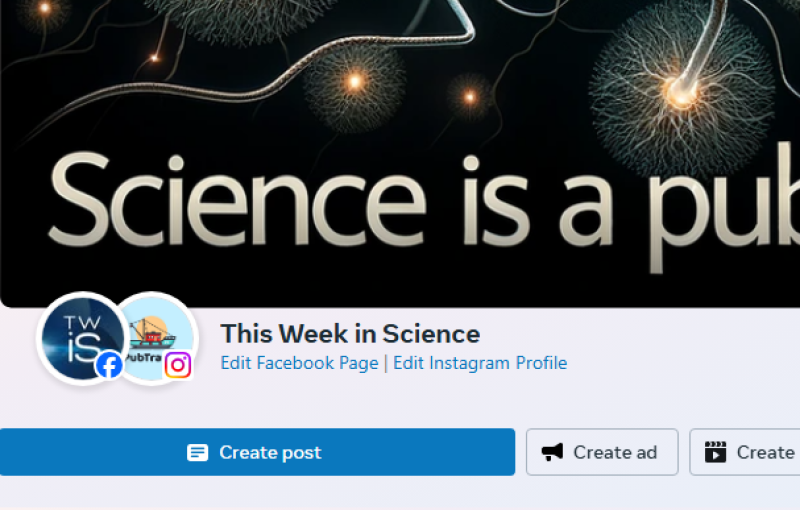
How to Catch a Social Media Manipulator in 27 Seconds
by Jon Scaccia May 21, 2025You scroll Facebook. Your aunt shares a political story. Then your high school friend. Then a news page you vaguely remember liking in 2014. Weird coincidence? Maybe. Or maybe you’re watching a digital puppet show—scripted, rehearsed, and performed by pages secretly working together.
Here’s the kicker: researchers have now figured out how to spot these sneaky acts of coordination, even when the culprits try to hide it. The method is fast, accurate, and eerily simple. The key? If two pages share the same link within 27 seconds of each other, over and over, it’s probably not random.
Let’s unpack the science—and the massive implications for how we understand influence, politics, and the information we see online.
Welcome to the Era of Coordinated Link Bombing
Over the last decade, social media has become a battleground—not just for opinions, but for attention. Political groups, foreign governments, and profit-hungry media networks have learned how to rig the game. Their tactic? Coordinated link sharing.
Instead of one viral post, imagine dozens of Facebook pages blasting the exact same link at nearly the same time. It floods your feed, boosts visibility, and tricks the algorithm into thinking the content is hot. And before now, most detection tools couldn’t keep up—because the bad actors simply changed when or how often they shared.
But a new study just changed that.
Meet the Algorithm Hunters
Armed with 11.2 million Facebook posts (yes, million), a team of researchers set out to find the digital fingerprints of manipulation. Their target: posts mentioning major U.S. politicians like Trump, Biden, Pelosi, and McConnell.
Instead of relying on old tricks like “if it happens within 10 seconds, it’s coordinated,” they used stats. And lots of them.
They built models that asked two simple questions:
- Did two pages share the same link suspiciously fast? (Like, blink-and-you’ll-miss-it fast)
- Did they do it so often it couldn’t be random?
Using a mix of exponential and negative binomial distributions (trust us, it sounds nerdier than it is), they landed on a magic number: 27 seconds. Share the same link faster than that? Red flag. Do it nine or more times over a few months? Double red flag.
Wait… How Big Is the Problem?
Let’s talk scale. Of the thousands of top political Facebook pages they analyzed:
- 23% were likely coordinating.
- More than 5.5% of links were shared in ways that looked manipulated.
Some coordination was expected—TV stations owned by the same company promoting their own stories, for instance. But the real shocker? Dozens of networks of seemingly unrelated pages were clearly working together. Some pushed entertainment. Others peddled political outrage. A few were connected to shady nonprofits run by the same handful of people.
One network even included a page named “Rush Limbaugh Radio”… that had nothing to do with Rush or radio.
What’s So Bad About Sharing a Link?
Good question. On the surface, sharing is caring, right?
But when dozens of accounts repeatedly blast the same message at the same time, it’s not about caring. It’s about gaming the system—fooling algorithms, juicing traffic numbers, and drowning out genuine conversation.
Think of it like a fake standing ovation. If 50 people clap at once, everyone else assumes something amazing just happened—even if it didn’t.
That’s what coordinated sharing does to our social media feeds. It creates illusions of popularity and consensus, which is especially dangerous during elections, pandemics, or high-stakes policy debates.
Who’s Behind the Curtain?
The researchers didn’t name every culprit, but they gave juicy examples:
- Hearst and Gray TV pages coordinated like clockwork to boost their own stories.
- Epoch Times and NTD TV ran a high-speed network, sharing nearly 16,000 links in lockstep.
- The Dorr Brothers, a trio of far-right activists, used “grassroots” gun rights pages across states to funnel attention—and donations—to themselves.
Some of these were legit media strategies. Others? Not so much.
So What Can We Do About It?
Here’s the good news: the method developed in this study isn’t just academic. It’s built to be reused, adapted, and applied to other platforms—even Twitter/X, TikTok, or Reddit.
Even better, the researchers made their models human-friendly. No AI black boxes. If a page is flagged, you can understand why.
The bad news? Accessing social media data is getting harder. Facebook shut down its open tool (CrowdTangle), and platforms like TikTok now demand pre-publication review of research.
So the very tools needed to expose manipulation… are quietly disappearing.
Why This Matters to Everyone (Yes, Even You)
This isn’t just a problem for scientists, fact-checkers, or journalists. It’s about your feed. Your vote. Your worldview.
If fake coordination can create the illusion that “everyone is talking about this,” then we lose the ability to tell what’s genuinely popular vs. what’s been manufactured to look that way.
And when that illusion spreads—especially with political content—it can warp public opinion and erode trust in democratic debate.
Final Thought: Facebook’s Funhouse Mirror
Platforms like Facebook are supposed to reflect public conversation. But what happens when a small group figures out how to rig the reflection?
Thanks to this study, we’ve got a powerful new flashlight. We can finally see who’s pulling the strings—and how fast they’re pulling them.
Let’s use it.
Let’s Explore Together 🚀
Curious to see how deep the rabbit hole goes? We’d love to hear from you!
🧠 What’s the coolest science fact you’ve learned lately?
🤖 How do you think social media should fight coordinated manipulation?
📲 Have you ever spotted something “too coordinated” in your feed?
Drop a comment, share this post with your most curious friend, and let’s make the internet just a little bit smarter—together.
Leave a Reply